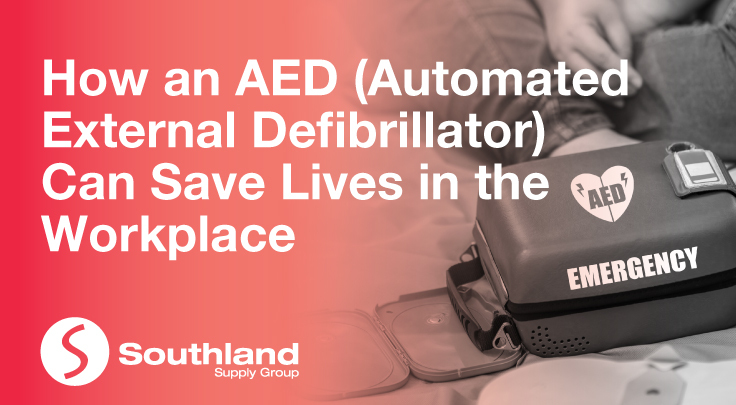
In Australia alone, one person dies every 26-minutes from heart disease. Many of these deaths are due to sudden and unexpected cardiac arrest.
Unfortunately, survival rates for sudden cardiac arrests (SCA) are only between 2% and 5%, with survival rates dropping by 10% for every minute that passes. The average response time for Australian ambulances is 10 to 12 minutes in metropolitan areas, and up to 30-minutes in many regional areas. So, when you only have a 10-minute window to act, waiting for help to arrive often proves fatal.
What Is an Automated External Defibrillator?
Automated External Defibrillators (AED) are lightweight and portable device that delivers an electric shock from the chest to the heart. The shock can stop an irregular heartbeat and allow a normal rhythm to resume following sudden cardiac arrest.
Who can use an AED?
Non-medical personnel such as security guards, flight attendants, police officers, fire service personnel, and other rescuers who have been trained in CPR can use AEDs. While formal training in the use of an AED is not required, it is recommended to help the rescuer increase their comfort and level of confidence. However, AEDs are intended for use by the public. Most automated defibrillators provide easy to follow visual and audio prompts to guide the rescuer through the process.
AEDs in Workplaces
Having an AED in the workplaces is recommended & highly encouraged. Having an AED on premises is as important as keeping a fire extinguisher, first aid kit and up to date evacuation plan. Defibrillators should be installed in workplaces because:
- Sudden Cardiac Arrest is one of the leading causes of death in Australia
- Early defibrillation is the third key link in the Chain of Survival
- Less than 5% of victims survive without early Defibrillation
- Defibrillation within the first few minutes of having Sudden Cardiac Arrest increases the chance of survival to more than 70%
- Without defibrillation, the chance of survival reduces by 10% for every minute that passes
There are a few important things to know that will make having a Defibrillator in the workplace more effective if it is ever required:
Location: Choose an accessible and visible location and install a clear AED sign. Do not place the AED in a locked cupboard in a room away from common areas.
Set up: Make sure that the automated external defibrillator is properly set up. When you receive your device, it will not be immediately activated and ready to use. Follow the steps received with your Defibrillator, before installing it. Not doing so will mean you lose precious seconds in an emergency and the Defibrillator will not have performed its regular self-tests.
Training: Make sure as many people as possible in the workplace are present for a demonstration or even a video on how to use the Defibrillator. While training is not required to use an AED, it makes people much more comfortable to know how simple the process really is and makes them more likely to step in during an emergency.
As the leaders of providing safety equipment in the workplace, Southland stocks a range of automated external defibrillators so you can have the confidence to help in the event of an emergency.
